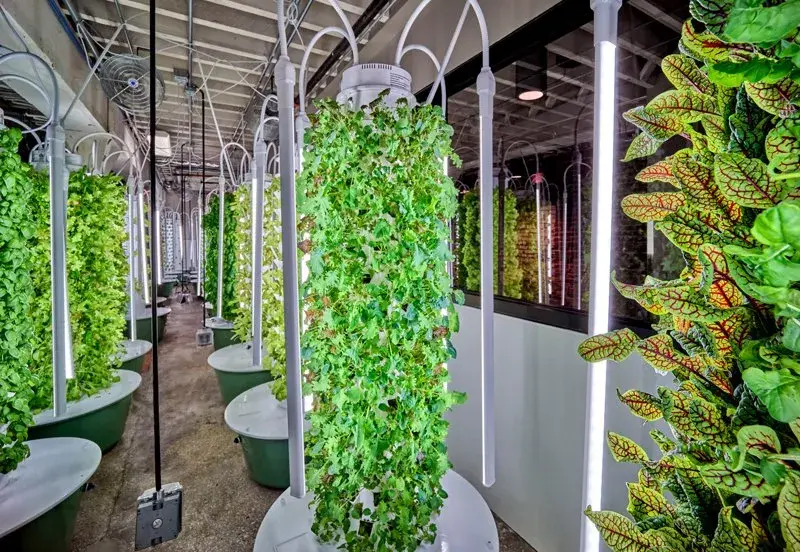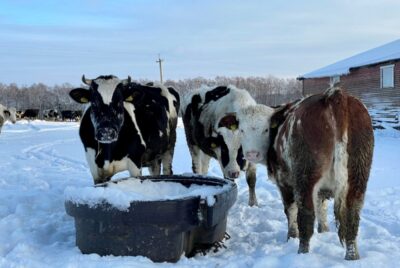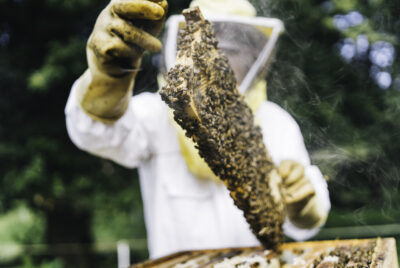Vertical Farming using Hydroponics
"We may earn a commission from purchases made using our links. Please see disclaimer."
Vertical farming using hydroponics is a revolutionary approach to agriculture that allows for the cultivation of crops in vertically stacked layers, using water-based nutrient solutions instead of soil. As an enthusiast and advisor, I firmly believe that this innovative farming technique holds tremendous potential for addressing the challenges of traditional farming methods and meeting the increasing global demand for food in a sustainable manner. In this article, I will provide you with a comprehensive overview of vertical farming using hydroponics, offering helpful suggestions and reasons for considering this approach.
1. Introduction
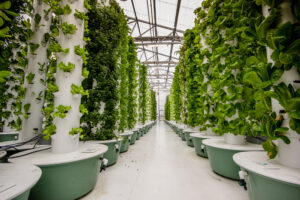 Vertical farming using hydroponics refers to the practice of growing crops in vertically arranged systems without the use of soil. Instead, nutrient-rich water solutions are used to deliver essential minerals and elements directly to the plants’ root systems. This method eliminates the need for large tracts of land and makes it possible to cultivate crops in urban areas, abandoned buildings, or even in harsh climates where traditional farming would be challenging.
Vertical farming using hydroponics refers to the practice of growing crops in vertically arranged systems without the use of soil. Instead, nutrient-rich water solutions are used to deliver essential minerals and elements directly to the plants’ root systems. This method eliminates the need for large tracts of land and makes it possible to cultivate crops in urban areas, abandoned buildings, or even in harsh climates where traditional farming would be challenging.
Vertical farming offers numerous benefits, such as increased crop yields, reduced water consumption, and the ability to grow crops year-round. By maximizing space utilization and optimizing resource efficiency, vertical farming using hydroponics has the potential to revolutionize the agricultural industry and contribute to a more sustainable future.
Vertical farming allows homesteaders to grow food year-round without relying on large plots of land or weather conditions. People can set up hydroponic systems in garages, basements, or spare rooms to provide sustenance and self-reliance. The vertical orientation takes advantage of vertical space, multiplying potential yield in a small footprint. By mastering this technique, homesteaders gain control over their food production no matter where they live.
2. The Basics of Hydroponics
 Hydroponics is a soilless cultivation technique that relies on water-based nutrient solutions to provide plants with the necessary elements for growth. This method offers several advantages over traditional soil-based farming. Firstly, hydroponics allows for precise control over the nutrient levels, pH balance, and water availability, ensuring optimal plant development and reducing the risk of nutrient deficiencies or imbalances.
Hydroponics is a soilless cultivation technique that relies on water-based nutrient solutions to provide plants with the necessary elements for growth. This method offers several advantages over traditional soil-based farming. Firstly, hydroponics allows for precise control over the nutrient levels, pH balance, and water availability, ensuring optimal plant development and reducing the risk of nutrient deficiencies or imbalances.
There are different types of hydroponic systems, including nutrient film technique (NFT), deep water culture (DWC), and aeroponics. I learned that each system has its own advantages and is suited for different crops and environments. The choice of hydroponic system depends on factors such as available space, crop selection, and desired level of automation.
For homesteaders interested in self-sufficiency, hydroponics offers the ultimate control over crop growth variables. Tuning pH, nutrients, light, and other factors leads to healthy, high-yielding plants. Hydroponic systems come in many configurations to fit any homestead. Once the fundamentals are understood, homesteaders can get creative designing custom systems using available materials.
3. Benefits of Vertical Farming with Hydroponics
 Vertical farming using hydroponics offers a range of benefits that make it a compelling option for sustainable agriculture.
Vertical farming using hydroponics offers a range of benefits that make it a compelling option for sustainable agriculture.
In addition to sustainability for the planet, vertical farming with hydroponics offers sustainability for homesteads. A reliable system for growing food without soil allows families to provide for themselves independent of supermarkets or farms.
When integrated into a homestead, these systems provide nutritious options throughout the year to supplement other food production efforts. The benefits go beyond agriculture to encompass principles of self-reliance and resilience.
Maximizing space utilization
By utilizing vertical space, vertical farms can produce significantly higher crop yields compared to traditional farming methods. Vertical farmers grow multiple layers of crops in the same footprint, making efficient use of limited land resources.
Efficient water usage
Hydroponic systems used in vertical farming require only a fraction of the water consumed by traditional farming methods. The recirculating nature of hydroponics allows for water reuse and minimizes water wastage, making it an environmentally friendly approach to cultivation.
Enhanced crop production and quality
By providing precise control over environmental factors such as light, temperature, and humidity, vertical farming using hydroponics creates ideal growing conditions for plants. This leads to faster growth rates, higher yields, and improved crop quality.
Year-round cultivation
Vertical farms can operate indoors, shielding crops from the effects of seasonal variations, extreme weather conditions, and pests. This enables year-round cultivation and ensures a consistent supply of fresh produce regardless of external factors.
4. Setting Up a Vertical Farm
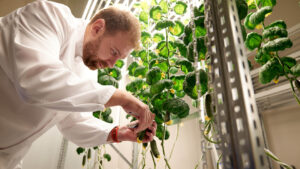 To set up a successful vertical farm using hydroponics, several key factors need to be considered. When establishing a vertical farm, homesteaders should start small and simple. Focus first on easy-to-grow leafy greens and herbs to understand system mechanics. Simple materials like plastic bins, grow lights, air pumps and tubing can form an entry-level system. As experience grows, homesteaders can expand crops, techniques and equipment complexity over time for manageable investment.
To set up a successful vertical farm using hydroponics, several key factors need to be considered. When establishing a vertical farm, homesteaders should start small and simple. Focus first on easy-to-grow leafy greens and herbs to understand system mechanics. Simple materials like plastic bins, grow lights, air pumps and tubing can form an entry-level system. As experience grows, homesteaders can expand crops, techniques and equipment complexity over time for manageable investment.
Choosing the right location
Selecting a suitable location is crucial for the success of a vertical farm. Factors such as access to markets, availability of resources, and proximity to urban centers should be taken into account. Additionally, considering the building’s structural integrity, availability of natural light, and ease of transportation are essential.
Designing the vertical farm structure
The design of a vertical farm should prioritize efficient space utilization, ease of maintenance, and scalability. And vertical farmers must carefully plan factors like lighting, irrigation systems, and proper ventilation to ensure optimal plant growth.
Selecting suitable crops for hydroponic cultivation
Not all crops are suitable for hydroponic cultivation. Leafy greens, herbs, tomatoes, and strawberries are among the popular choices for vertical farming due to their high yield potential and shorter growing cycles. However, research and experimentation are vital to determine the most profitable crop selection based on market demand and cultivation conditions.
5. Essential Components of a Vertical Farm
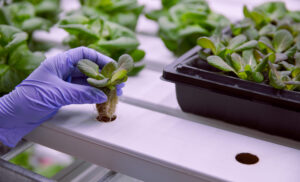 A successful vertical farm requires the integration of various components to support healthy plant growth and maximize yields. The modular nature of hydroponic components allows homesteaders to customize systems to meet their needs.
A successful vertical farm requires the integration of various components to support healthy plant growth and maximize yields. The modular nature of hydroponic components allows homesteaders to customize systems to meet their needs.
With a little DIY spirit, many parts can be fashioned from materials around the homestead. Taking inventory of available resources helps determine what to purchase versus what to creatively construct for yourself.
Growing mediums for hydroponics
In hydroponics, different growing mediums are used to provide physical support to the plants’ roots and retain moisture. Common growing mediums include perlite, vermiculite, coconut coir, and rockwool.
Nutrient solutions and their importance
Nutrient solutions are carefully formulated mixtures of essential minerals and elements that are dissolved in water and delivered directly to the plant roots. The composition and concentration of nutrient solutions need to be regularly monitored and adjusted to meet the specific requirements of each crop.
Lighting systems for indoor vertical farms
Since vertical farms operate indoors, artificial lighting plays a crucial role in providing the necessary light spectrum for photosynthesis. Therefore, I use LED lights due to their energy efficiency, long lifespan, and ability to tailor the light spectrum to meet specific crop needs.
6. Managing the Vertical Farm
 Managing a vertical farm involves closely monitoring and controlling various environmental factors to ensure optimal plant growth and prevent the spread of pests and diseases. Homesteading is hands-on by nature. While automation has its place, staying involved with daily vertical farm operations builds intuition and skills. Routine checks on pH, nutrients, and plant health leads to early problem detection and prevention for bountiful harvests. Developing this intuitive rhythm with the vertical farm ecosystem reflects the homesteading ethos.
Managing a vertical farm involves closely monitoring and controlling various environmental factors to ensure optimal plant growth and prevent the spread of pests and diseases. Homesteading is hands-on by nature. While automation has its place, staying involved with daily vertical farm operations builds intuition and skills. Routine checks on pH, nutrients, and plant health leads to early problem detection and prevention for bountiful harvests. Developing this intuitive rhythm with the vertical farm ecosystem reflects the homesteading ethos.
Monitoring and controlling environmental factors
Temperature, humidity, CO2 levels, and airflow need to be carefully monitored and controlled to create the ideal growing conditions for plants. Because of this, automated systems can be employed to maintain optimal environmental parameters, minimizing the need for manual intervention.
Pest and disease management
I have found that vertical farms relatively protect from external pests and diseases. However, maintaining a strict hygiene protocol, implementing integrated pest management strategies, and regularly inspecting plants are essential to prevent and control any potential infestations.
Harvesting and crop rotation
Regular harvesting of mature crops ensures the continuous production of fresh produce. Additionally, implementing crop rotation practices can help maintain soil health and prevent the buildup of pests or diseases specific to certain crops.
7. Economic Viability and Sustainability
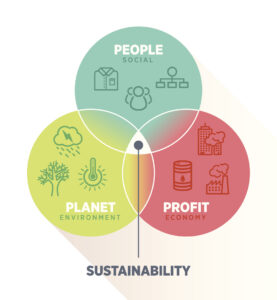 Vertical farming using hydroponics offers economic viability and contributes to sustainability in various ways. For homesteads, economic return comes in the form of food security, savings on groceries, and surplus crops for sale or trade.
Vertical farming using hydroponics offers economic viability and contributes to sustainability in various ways. For homesteads, economic return comes in the form of food security, savings on groceries, and surplus crops for sale or trade.
The system earns its keep by providing organic, hyperlocal food to the family. Any economic optimizations are secondary to instilling self-reliance through nutrient dense, homegrown food.
Cost analysis of vertical farming with hydroponics
While the initial setup costs of a vertical farm can be higher than traditional farms, the potential for higher yields, year-round production, and reduced transportation costs can make vertical farming financially profitable in the long run. Conducting a thorough cost analysis considering factors like energy consumption, labor costs, and crop prices is crucial for business planning.
Reducing transportation and carbon footprint
I love the fact that vertical farms located near urban centers can significantly reduce the distance food travels from farm to plate. And this reduces my carbon footprint associated with transportation and supports local food systems, promoting sustainability.
Engaging in local markets and community initiatives
Vertical farms have the opportunity to engage with local communities by providing fresh, locally-grown produce. Partnering with local businesses, schools, or community organizations can enhance market reach, establish a loyal customer base, and contribute to community well-being.
8. Challenges and Future Prospects
 While vertical farming using hydroponics holds great promise, there are still challenges to overcome and future prospects to explore. Homesteaders relish a good challenge. Pushing through beginner roadblocks builds grit and ingenuity. Vertical farming appeals to the tinkerer willing to tweak systems for peak optimization. There is always room for improvement through experimentation with new crops, techniques and technologies to uncover the next innovation.
While vertical farming using hydroponics holds great promise, there are still challenges to overcome and future prospects to explore. Homesteaders relish a good challenge. Pushing through beginner roadblocks builds grit and ingenuity. Vertical farming appeals to the tinkerer willing to tweak systems for peak optimization. There is always room for improvement through experimentation with new crops, techniques and technologies to uncover the next innovation.
Energy consumption and efficiency improvements
Vertical farms require a significant amount of energy to power lighting, climate control systems, and irrigation. Advancements in energy-efficient technologies and renewable energy sources can help reduce energy consumption and improve the sustainability of vertical farming operations.
Integration of automation and artificial intelligence
Automation and artificial intelligence can streamline vertical farming processes, reduce labor requirements, and optimize resource utilization. So smart sensors, data analysis, and machine learning algorithms can enable precise control and predictive decision-making, enhancing overall farm efficiency.
Scaling up vertical farming operations
Scaling up vertical farming to meet the demands of a growing population requires advancements in technology, standardized practices, and cost-effective solutions. Collaboration between researchers, industry experts, and policymakers is essential to realize the full potential of vertical farming on a larger scale.
9. Conclusion
Vertical farming using hydroponics is a game-changing approach to agriculture that offers numerous advantages over traditional farming methods. By maximizing space utilization, optimizing resource efficiency, and providing a controlled environment for plants, vertical farming can revolutionize food production and contribute to a sustainable future. As an enthusiast and advisor, I encourage you to explore the possibilities of vertical farming with hydroponics and consider its potential for addressing the challenges of our current agricultural systems.
For homesteaders, vertical farming with hydroponics represents the future of self-reliance. The power to produce food year-round independent of weather and land allows families to truly provide for themselves. Adopting this revolutionary technique puts food security into the hands of homesteads and frees them from traditional farming constraints.
FAQs (Frequently Asked Questions)
Can vertical farming using hydroponics be practiced at home?
Yes, you can practice vertical farming using hydroponics at home on a smaller scale. Compact hydroponic systems are available for home use, allowing individuals to grow fresh produce in limited spaces.
How much water will I be required to use for vertical farming with hydroponics?
Hydroponic systems used in vertical farming consume significantly less water compared to traditional farming methods. On average, hydroponics uses 70-90% less water.
What are the primary challenges I will face in vertical farming with hydroponics?
Some of the challenges include high initial setup costs, energy consumption, maintaining optimal environmental conditions, and ensuring proper nutrient management.
Are vertical farms sustainable?
Yes, vertical farms have the potential to be sustainable. By reducing the carbon footprint associated with transportation, minimizing water usage, and engaging in local markets, vertical farms can contribute to sustainability.
Which crops are most suitable for vertical farming using hydroponics?
I find most leafy greens, herbs, tomatoes, strawberries, and other fast-growing crops with shallow root systems are well-suited for vertical farming using hydroponics due to their high yield potential and shorter growing cycles.

